#Royal Geographical Society
Explore tagged Tumblr posts
Text
Anne Strathie, biographer of Bowers and Ponting, and chronicler of Terra Nova men in WWI, has a new book out, following a thread through two centuries of polar exploration (both poles!) via 50 carefully chosen objects. She's giving a talk about it at the RGS on Monday, 27 Jan 2025, 14:30 GMT, which you can attend on Zoom if you're not convenient to London. Register to reserve a seat or be sent a Zoom link! It's completely free either way!
You can get a copy of the book here, or at your local bookshop ...
UPDATE: They have sold out the live event, so you can't book a ticket online, but if you email the email link provided on the page, they will get you on the Zoom list.
#polar history#anne strathie#free stuff#royal geographical society#rgs#lecture#livestream#polar exploration
105 notes
·
View notes
Text
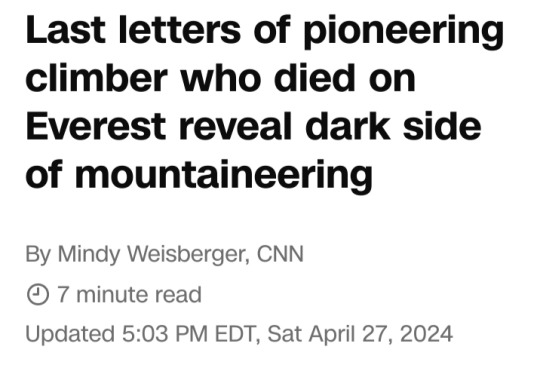
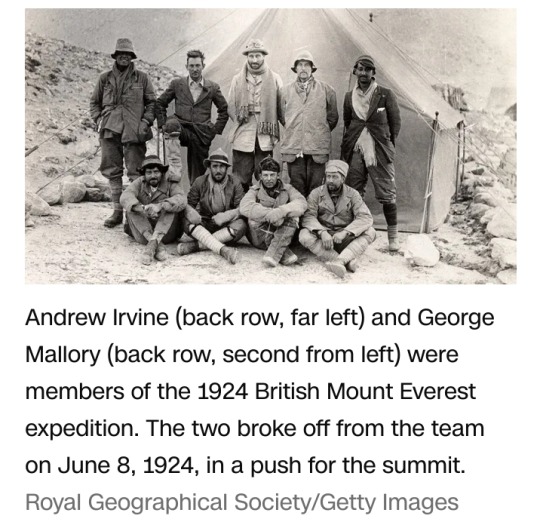
(CNN) — George Mallory is renowned for being one of the first British mountaineers to attempt to scale the dizzying heights of Mount Everest during the 1920s — until the mountain claimed his life.
Nearly a century later, newly digitized letters shed light on Mallory’s hopes and fears about ascending Everest, leading up to the last days before he disappeared while heading for its peak.
On 8 June 1924, Mallory and fellow climber Andrew Irvine departed from their expedition team in a push for the summit; they were never seen alive again.
Mallory’s words, however, are now available to read online in their entirety for the first time.
Magdalene College, Cambridge, where Mallory studied as an undergraduate from 1905 to 1908, recently digitized hundreds of pages of correspondence and other documents written and received by him.
Over the past 18 months, archivists scanned the documents in preparation for the centennial of Mallory’s disappearance.
The college will display a selection of Mallory’s letters and possessions in the exhibit “George Mallory: Magdalene to the Mountain,” opening June 20.
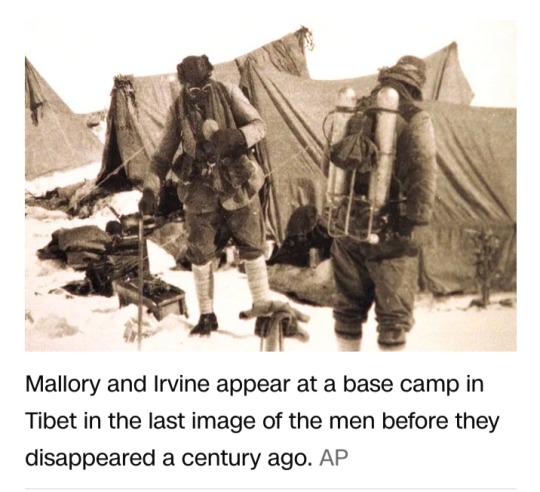
The Everest letters outline Mallory’s meticulous preparations and equipment tests, and his optimism about their prospects.
But the letters also show the darker side of mountaineering: bad weather, health issues, setbacks, and doubts.
Days before his disappearance, Mallory wrote that the odds were “50 to 1 against us” in the last letter to his wife Ruth dated 27 May 1924.
“This has been a bad time altogether,” Mallory wrote. “I look back on tremendous efforts & exhaustion & dismal looking out of a tent door and onto a world of snow & vanishing hopes.”
He went on to describe a harrowing brush with death during a recent climb, when the ground beneath his feet collapsed, leaving him suspended “half-blind & breathless.”
His weight supported only by his ice axe wedged across a crevasse as he dangled over “a very unpleasant black hole.”
Other letters Mallory exchanged with Ruth were written at the time of their courtship, while he was serving in Britain’s artillery regiment during World War I.
Throughout his travels, correspondence from Ruth provided him with much-needed stability during the most challenging times, said project lead Katy Green, a college archivist at Magdalene College.
“She was the ‘rock’ at home, he says himself in his letters,” Green said.
The archivist recounted one note in which Mallory told Ruth: “I’m so glad that you never wobble, because I would wobble without you.”
Yet while Mallory was clearly devoted to his wife, he nonetheless repeatedly returned to the Himalayas despite her mounting fears for his safety.
“There’s something in him that drove him,” Green said. “It might have been his wartime experience, or it might have just been the sort of person that he was.”
‘Documents of his character’
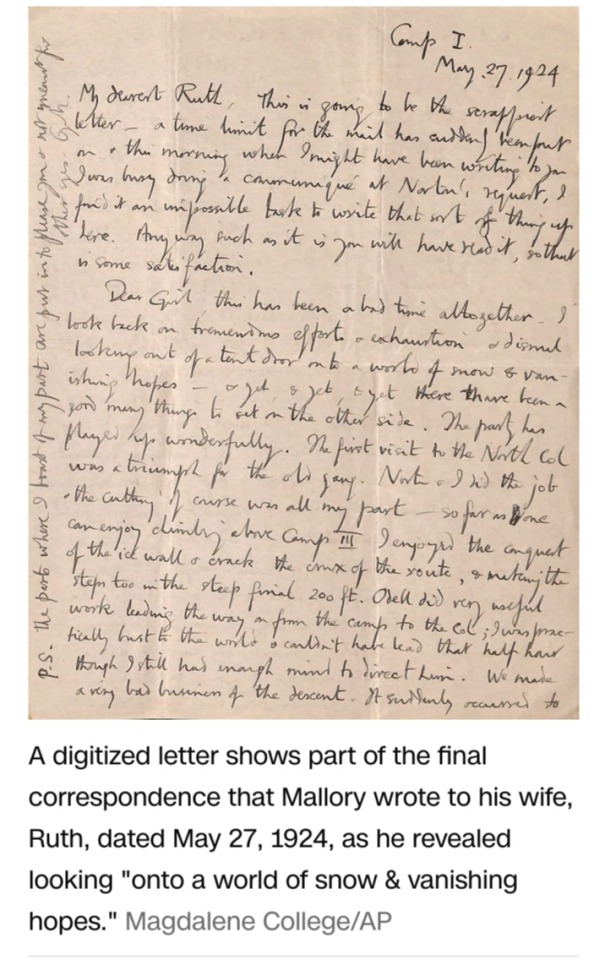
In total, the collection includes around 840 letters spanning from 1914 to 1924.
Ruth wrote about 440 of those to Mallory, offering an unprecedented and highly detailed view of daily life for women in the early 20th century, Green told CNN.
Together, the letters offer readers a rare glimpse of the man behind the legend, said Jochen Hemmleb, an author and alpinist who was part of the Everest expedition that found Mallory’s body in 1999.
“They are really personal. They are documents of his character. They provide unique insights into his life, and especially into the 1924 expedition — his state of mind, his accurate planning, his ambitions,” said Hemmleb, who was not involved in the scanning project.
“It’s such a treasure that these are now digitized and available for everyone to read.”
Frozen in place
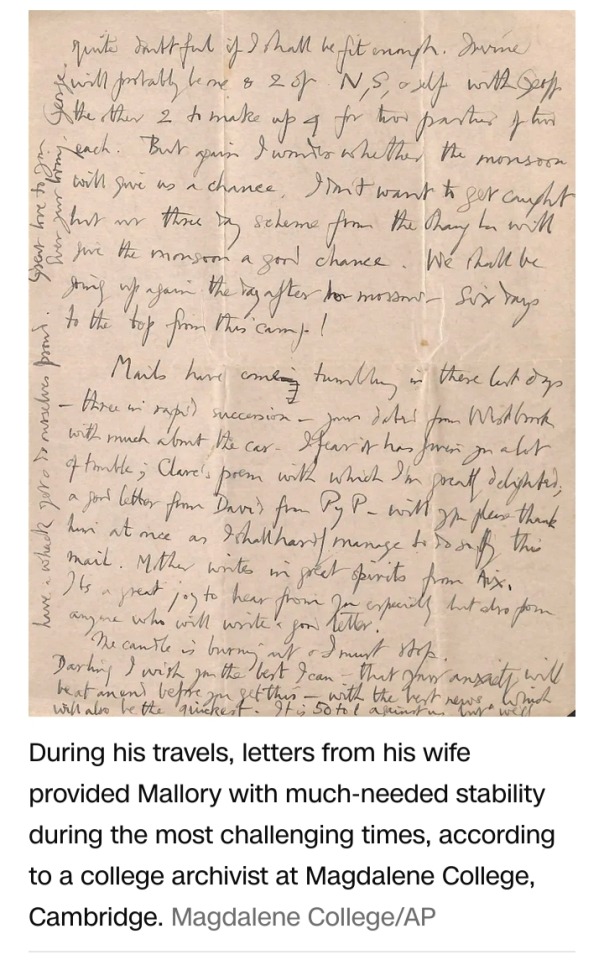
Three of the digitized letters — written to Mallory by his brother, his sister and a family friend — were recovered from Mallory’s body by the Mallory and Irvine Research Expedition, which ascended Everest seeking the remains of Mallory and Irvine.
On 1 May 1999, expedition member and mountaineer Conrad Anker found a frozen corpse at an altitude of around 26,700 feet (8,138 meters) and identified it as Mallory’s from a name tag that was sewn into his clothes.
Mallory’s body was interred where it lay at the family’s request, said Anker, who was not involved in the letter digitizing project.
“Having done body recoveries in other places, it’s very laborious, and it’s very dangerous at that altitude,” he told CNN.
“We collected some of his personal effects that went back to the Royal Geographical Society,” including the three letters that were later scanned at Magdalene College.
Mount Everest, the highest peak in the Himalayan mountain range, is also the tallest mountain on Earth, rising 29,035 feet (8,850 meters) above sea level on the border between Nepal and Tibet — an autonomous region in China.
Its Tibetan name is Chomolungma, meaning “Goddess Mother of the World,” and its Nepali name is Sagarmatha, meaning “Goddess of the Sky.”
However, these names were unknown to 19th-century British surveyors who mapped the region.
In 1865, the Royal Geographical Society named the peak Mount Everest after British surveyor Sir George Everest, a former surveyor general of India.
Mallory participated in all three of Britain’s first forays onto Everest’s slopes: in 1921, 1922 and 1924.
When he vanished in 1924, he was less than two weeks shy of his 38th birthday.
Many have speculated about whether Mallory and Irvine managed to reach Everest’s summit.
The climbers were last seen in the early afternoon of June 8 by expedition member and geologist Noel Odell, who was following behind and glimpsed them from a distance.
Odell later found some of their equipment at a campsite, but there was no trace of Mallory and Irvine.
“(Mallory) risked a lot despite the fact that he had a family back home and three small children,” Hemmleb said.
“We don’t know whether it was really irresponsible to make that final attempt, because we don’t really know what happened. It could be that in the end, he simply had bad luck.”
So close, yet so far

Decades after Mallory’s death, Sherpa Tenzing Norgay and New Zealand mountaineer Sir Edmund Hillary became the first to reach Everest’s peak, summiting on 29 May 1953.
In the years that followed, thousands attempted to climb Everest, with nearly 4,000 people reaching its summit.
More than 330 climbers have died trying since modern records were kept, according to the Himalayan Database, which compiles records of all expeditions in the Himalayas.
Some of those bodies remain on the mountain, frozen where they fell and visible to climbers who pass them by.
“If you’re out in this environment, you make peace with your own mortality and the deaths of others,” Anker said.
“You’re above 8,000 meters, and when there are weather changes or your own systems cease to function due to the lack of oxygen, it gets serious really quickly.”
When mountaineers are close to a mountain’s summit, they sometimes proceed even under dangerous conditions due to so-called summit fever, a compulsion to reach the peak even at the cost of their own safety.
It’s unknown whether Mallory was in the grip of summit fever when he died, but he might have thought that his reputation depended on summiting.
“That was going to be the defining moment in his life,” Anker said.
By comparison, Mallory’s team member Edward Norton had attempted to summit four days earlier but turned back at roughly the same altitude where Mallory and Irvine were seen for the last time.
“I had a conversation with one of Edward Norton’s sons a couple of years ago,” Hemmleb said.
“When I asked him, do you think it was mere luck that your father survived and Mallory died?"
He said, ‘No, I think there was one difference: My father, Edward Norton, didn’t need the mountain.’”
As a climber himself, Hemmleb took that message to heart.
“That is something I personally learned from Mallory,” he said. “You need to be very careful not to make yourself dependent on that summit success.”
A century has elapsed since Mallory’s death, but the digitizing of these letters assures that his story will keep being told, Hemmleb said.
“This will continue beyond my own lifetime, I’m certain of that,” he added. “In a sense, it’s the expedition that never ends.”
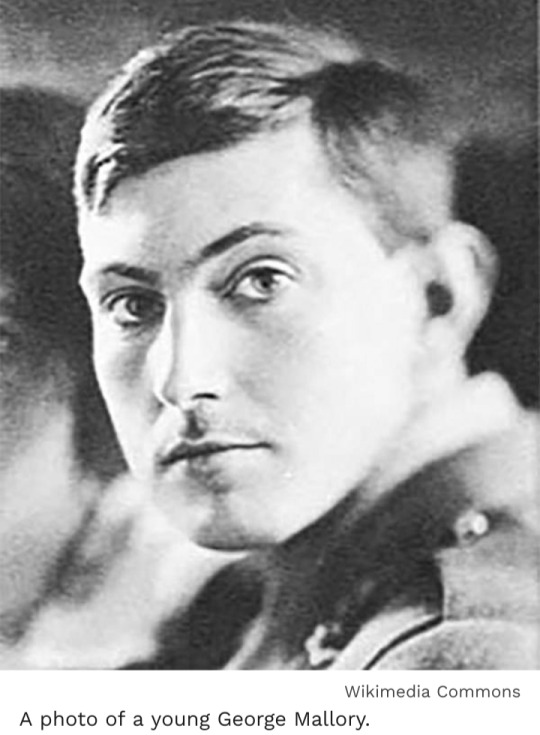
George Herbert Leigh-Mallory (18 June 1886 – 8 or 9 June 1924) was an English mountaineer who participated in the first three British Mount Everest expeditions from the early to mid-1920s.
#George Herbert Leigh-Mallory#George Mallory#Andrew Irvine#Mount Everest#Magdalene College#Cambridge#George Mallory: Magdalene to the Mountain#Himalayas#1924 British Mount Everest Expedition#Mallory and Irvine Research Expedition#Royal Geographical Society#Chomolungma#Sagarmatha#Sir George Everest#Nepal#Tibet#Sherpa Tenzing Norgay#Sir Edmund Hillary#Himalayan Database#expedition#summit fever#Everest letters#digitized letters#mountain climbing#1900s#20th century
10 notes
·
View notes
Text
Does anyone else have record or data about which learned societies Francis Crozier was a part of?
I only have RAS and FRS in there. But I feel there was also RGS but I am struggling to confirm. If anyone has any other data, could you send it my way?
#learned society#FRS#Fellowship of the Royal Society#RGS#Royal Geographical Society#RAS#Royal Astronomical Society#19th century history#francis crozier#james clark ross#william perry#polar exploration#the franklin expedition#franklin expedition#casting a large net right now#naval history
6 notes
·
View notes
Text

Using carefully curated paper maps of the Caribbean and UK that had been shredded into strips, including surplus maps from the Society's Collections, the artist [Sonia E Barrett] and several Black women co-creators used African-Caribbean hair styling techniques to plait the shredded maps. Culturally, such female spaces of hair styling are filled with discussions around self- and community-care, and this Black woman-centred cultural practice juxtaposed the wood-lined walls, globes and portraits of white explorers that typify the building with the music and laughter of Black women talking and working together. (via Dreading the map | Royal Geographical Society)
Interview with Sonia E Barrett here
#Sonia E. Barrett#race#Blackness#Black women#arts activism#mixed media#Royal Geographical Society#installation#CARICUK#Dread Maps
1 note
·
View note
Text

Royal Canadian Geographical Society's 2024 Impact Report
This has been an extraordinary year for the Royal Canadian Geographical Society:
One of our expeditions discovered the wreck of the Quest;
Canadian Geographic became Canada's top paid-circulation magazine;
We supported field research that extended public understanding of Canada and the natural world.
I commend our CEO John Geiger and his staff for their stellar accomplishments.
📕 http://via.maharaj.org/rcgs24
#rcgs#frcgs#geographical#geography#canada#royal canadian geographical society#canadian geographic#geographica#canadian
0 notes
Text

Bring your walls to life. Visit the webshop chungkong.nl today!
At the close of WWII, a young nurse tends to a badly-burned plane crash victim. His past is shown in flashbacks, revealing an involvement in a fateful love affair.
Director: Anthony Minghella Stars: Ralph Fiennes, Juliette Binoche, Willem Dafoe
#English#Patient#1930#WWII#Count#Almásy#Sahara#Desert#Royal#Geographical#Society#Hungarian#map#maker#plane#crash#Ralph#Fiennes#minimal#minimalism#minimalist#movie#poster#film#artwork#cinema#alternative#symbol#graphic#design
1 note
·
View note
Text
NASAs Lola Fatoyinbo Receives Royal Geographical Society Prize
Dr. Lola Fatoyinbo, a research scientist at NASA’s Goddard Space Flight Center in Greenbelt, Maryland, received the Esmond B. Martin Royal Geographical Society (RGS) Prize on April 8 in London. The prize, according to the RGS, recognizes “outstanding achievement by an individual in the pursuit and/or application of geographical research, with a particular emphasis on […] from NASA https://ift.tt/DZFbEjs
0 notes
Text
Yep: Professor Emeritus Herbert C. Williams, PhD FRGS

Just got home after picking up my friend from the airport. Her flight got delayed so I'm back later than I'd expected, but it was worth it to see this little guy hanging out on the door to my building. @markscherz I've been calling it Herbert but I'd bet there's a more scientific name?
#much more scientific#I am a very helpful person#forgot he is a fellow of the royal geographical society
928 notes
·
View notes
Text
first day as a 20th century polar explorer i’m selected to go on the super special sledging trip with my polycule but succumb to scurvy and my preexisting heart condition i will never tell anybody about and they have to carry me back to the ship. second day as a 20th century polar explorer the dominant member of my polycule convinces my favorite boyfriend to vote me out survivor-style and send me home on the invalid ship so i am now a bitter 27 year-old divorceé. third day as a 20th century polar explorer i’m begging wealthy widows for money but my evil gay kleptomaniac brother aids in the theft of the crown jewels of ireland and shames the family so nobody will give me a ship. fourth day as a 20th century polar explorer one of my benefactors makes me bring a huge fuckoff car to antarctica and i run out of space for food so all of my men almost starve and the car doesn’t even work. fifth day as a 20th century polar explorer my evil ex dies and i finally get to go back to the pole but my ship gets fucked and i have to spend 2 years dragging my men home and when i get back the royal geographical society are still publicly cucking me and nobody cares because of wwi. sixth day as a 20th century polar explorer i round up the boys for one last hurrah but die of that same preexisting condition before we can even get anywhere like a #boss. which is also what they call me.
#a historically messy life goddddd bless god bless#ernest shackleton#polar exploration#robert falcon scott#edward adrian wilson#discovery expedition#nimrod expedition#endurance expedition
311 notes
·
View notes
Text
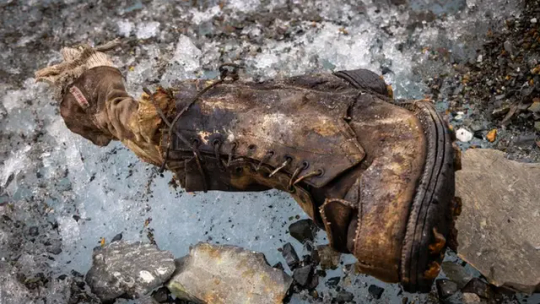
Remains of Andrew 'Sandy' Irvine Who Vanished in 1924 Found on Mount Everest
The foot, boot and sock thought to belong to Sandy Irvine, who disappeared during George Mallory's 1924 expedition to climb Mount Everest, have likely been found. They could be a vital clue in unraveling an even bigger mystery.
Remains believed to belong to a British explorer who vanished more than 100 years ago while climbing Mount Everest have finally been found.
Andrew Comyn "Sandy" Irvine, aged 22, disappeared along with the mountaineer George Mallory in June 1924. The pair were attempting to become the first people to scale the world's highest peak.
It's still a mystery whether they succeeded in their goal before they died. Mallory's remains were discovered in 1999, which were missing a photograph of his wife that the climber had planned to leave on the summit. Irving, who had been carrying a Kodak camera that may have recorded a possible historic summit, was never recovered. The summit was officially first reached 29 years later, when Edmund Hillary and Tenzing Norgay scaled Everest from its south side in 1953.
Now, a National Geographic documentary team, including the Oscar-winning director Jimmy Chin and the climbers and filmmakers Erich Roepke and Mark Fisher, have found what they believe is Irvine's foot.
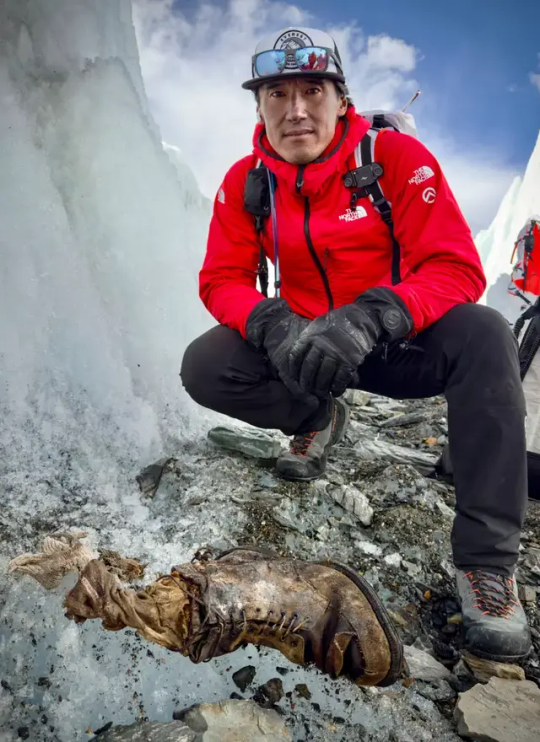
Encased in a boot and wearing a sock stitched with his name, the foot was discovered on Everest's Central Rongbuk Glacier, further down the mountain from Mallory's remains.
"I lifted up the sock," Chin told National Geographic, "and there's a red label that has A.C. IRVINE stitched into it."
Irvine and Mallory were last seen on June 8, 1924, as they set off to scale the summit. One of their expedition teammates, Noel Odell, reported spotting the two near the second of the mountain's three steps as two tiny black dots. One of the dots broke past the skyline during a brief parting of the clouds, then they disappeared.
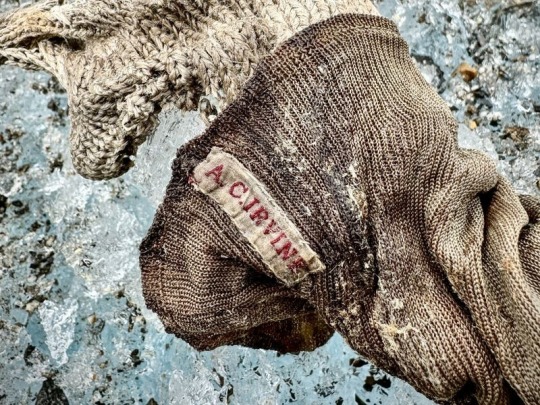
Mallory's body was found less than 2,000 feet (600 meters) from the summit by the U.S. rock climber Conrad Anker. Mallory's remains were tied by a rope around the waist and had injuries suggesting that the pair had fallen while connected together.
By searching near these remains and scouring the glacier for clues, Chin and his team located the boot melting out of the ice.
"This was a monumental and emotional moment for us and our entire team on the ground, and we just hope this can finally bring peace of mind to his relatives and the climbing world at large," Chin said.
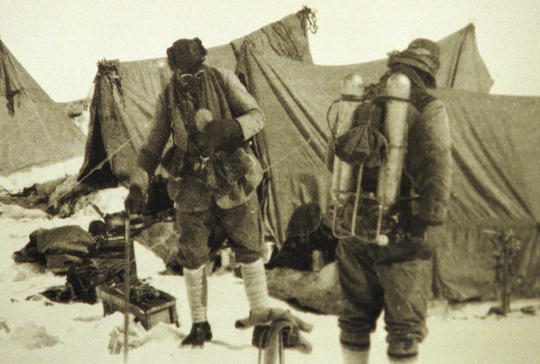



The team sent the remains to China Tibet Mountaineering Association, which is responsible for climbing permits on Everest's northern side. The find was also reported to the Royal Geographical Society, which organized Irvine and Mallory's expedition, and Irvine's great niece and biographer, Julie Summers.
"I have lived with this story since I was a 7-year-old when my father told us about the mystery of Uncle Sandy on Everest," Summers said, as reported by the Guardian. "When Jimmy told me that he saw the name AC Irvine on the label on the sock inside the boot, I found myself moved to tears. It was and will remain an extraordinary and poignant moment."
The Irvine family has volunteered to take a DNA test so that the identity of the remains can be conclusively determined. Meanwhile, Chin and his team will continue to search for more artifacts. If Irvine's camera is found and it can prove they scaled the peak, it could potentially rewrite history.
By Ben Turner.

#Mt. Everest#Mount Everest#Sandy Irvine#Remains of Andrew 'Sandy' Irvine Who Vanished in 1924 Found on Mount Everest#George Mallory#1924 British Mount Everest expedition#mountain climbing#archeology#archeolgst#history#history news
171 notes
·
View notes
Text
The Prince of Wales Becomes Co-Patron Of The “Jewel Of Arabia Expedition”










Prince William, Co-Patron of the "Jewel of Arabia Expedition," attends the launch of the expedition at Royal Geographical Society on 25 November 2024 in London, England.
The Expedition aims to raise awareness amongst young people both in and outside of Oman of the value of Oman's natural heritage and biodiversity as well as the environmental challenges the country and the wider world face.
📸: Benjamin Cremel - WPA Pool / Getty Images
#prince william#prince of wales#british royal family#Jewel of Arabia Expedition#Royal Geographical Society#oman#natural heritage#biodiversity
6 notes
·
View notes
Text
Worldbuilding Checklist (STILL UPDATING)
This is basically a bunch of worldbuilding checklists crammed together. Use what works for you, leave the rest. This is fantasy orientated and I will continue to update it regularly so reblog or comment something you think should be added.
History:
How far back does recorded history go?
How does history interact with myth and folklore?
How did the current system of governance come into power?
What are some notable figures of history?
Is your world's history broken down into eras?
What events have been twisted and changed as they've been passed down through the generations?
Geography:
What is the climate of this area?
What are the common plants of this area? Are there any fictional plants?
What are the common animals of this area? Are there any fictional animals?
Are there continents? Islands?
How much of this area is inhabited?
What area is known?
Country borders?
What are the major geographical landmarks i.e. rivers, mountains?
Where are the major trade routs?
What are the seasons like in this area?
Magic System:
How is magic practiced? Using wands, staffs, runes, etc?
How is magic learned?
Can magic be taken?
What can't magic do? What are its limitations?
What is the first thing a person learns when learning magic?
How are magic users perceived by others?
What are the laws regarding magic?
How does magic link to religion?
How has magic influenced history?
Politics and Law:
What style of leadership rules the area i.e. theocrasy (ruled by religion), monarchy (ruled by a royal family)?
How are laws created?
What is the process from the conception of a law to the point where it passed?
How is the law enforced?
What is the judicial system of this place?
Is there a death penalty?
Society and Culture:
How many major cultures are there?
What is their global population?
Where are they located geographically within your world?
Is there a social hierarchy / a division between the classes?
What are the major pieces of art in this world?
What does its music sound like? What instruments are used?
Are there well know folk songs?
What food is eaten by each group of society?
What are the treat foods of this area?
What are the foods saved for special occasions?
What holidays / special occasions are there?
Religion:
What are the major religions in this area? Do they get on with each other?
How are these religions viewed by their worshippers? By those who worship other religions? By those who worship no one at all?
How much does religion influence politics and the laws passed?
What do these religions believe in?
Are there divisions within these religions between groups who believe slightly different things?
How old are these religion? Which came first?
Which religion has the biggest influence on the world?
What are their opinions towards the government?
What are their opinions regarding the poor and the rich? Do they differ?
What are their opinions towards magic and technology?
Commerce and Industry:
What is the major industry?
Main imports / exports?
How wealthy is this country / area?
What valuable resources does this country / area have?
What are the common crops / livestock in this area?
Is this area coastal? Is there a fishing / trade industry?
Is this area forested? Logging and timber?
Technology:
What are the transport option available? For the poor? For the rich?
#writing#writing prompts#writeblr community#creative writing#writing prompt#prompt#fantasy prompts#prompts#writeblr#fantasy worldbuilding#fantasy#writing fantasy#worldbuilding#world building#worldbuilding stuff#worldbuilding questions
580 notes
·
View notes
Text

Am Fear Liath Mór, or the Big Grey Man of Ben MacDhui [Scottish cryptid]
The high passes of Ben MacDhui – the second largest mountain in Scotland – are haunted by tales of a mysterious creature that supposedly stalks hikers. Usually it is described as an impossibly tall, grey spectre, thereby earning it the name ‘Am Fear Liath Mór’, meaning ‘the big grey man’.
The story starts in 1891 with professor Norman Collie of the Royal Geographic Society, who happened to be a passionate hiker as well. The professor had just climbed the cairn on the summit of Ben MacDhui when he heard something that vaguely sounded like footsteps. I should mention that this area is notoriously misty, so you can imagine how easy it is for a lone hiker to get anxious when hearing strange noises.
The footsteps continued, but they were oddly spaced: for every ‘step’ the professor heard, he himself took three or four. It was as if this mysterious spectre was taking giant leaps or had huge legs. Eventually the professor was overtaken by panic and fled. Much later, in 1925, he recounted his tale and shared it with the newspapers, who were eager to publish and often exaggerate the story of a supposed monster or cryptid living in the Scottish mountains. At the time, the mystery creature was dubbed ‘the Ben MacDhui Ghost’ in the media.
Afterwards, multiple people came forward with claims about the mountain ghost, some of which were believable (hearing unidentified sounds) and some were more fantastic (Richard Frere and Peter Densham claimed to have had a conversation with an invisible, psychic creature).
Richard Frere would later claim that while he was hiking on the top of the Ben MacDhui, he had an unshakeable feeling that someone else was there with him, and he would hear a strange high-pitched noise that seemed to come from the soil beneath his feet.

Frere also gave a physical description of a creature he claimed to have seen (but it is difficult to verify whether this is the oldest actual ‘sighting’ of the supposed ghost): a large, brown creature was seen swaggering down the mountainside. It stood about 20 feet (6m) tall, was covered with short brown fur and had a disproportionally large head supported by a thick, muscular neck. It had broad shoulders but walked upright and did not resemble an ape.
Interestingly, only a single sighting happened on a nearby mountain, rather than on the Ben MacDhui itself: in the 1920’s, Tom Crowley, the president of the local Moray Mountaineering Club, claimed to have seen an apparition while descending from Braeriach to the Glen Eanaich. It was a very tall, misty grey figure with a humanoid shape, albeit with long legs that ended in strange talons (described as resembling fingers more than toes) and a head with pointy ears.
Dr. A. M. Kellas, himself a famed mountaineer, also claimed that a giant grey humanoid creature haunted the mountain. Among the many supposed sightings, I am uncertain which one is actually the oldest description of the ‘Grey Man’ as a tall, grey spectre, but it is certainly the most popular one. The grey apparition had cemented itself as a local cryptid and urban legend and many more supposed sightings followed.
Though it is often claimed that the creature is connected to ancient Scottish or Celtic mythology, this is most likely false. Gray Affleck, the author of ‘The Big Grey Man of Ben MacDhui’, attempted to research this link but could not find a single connection with actual Highland mythology.
In 1958, the June edition of ‘Scots Magazine’ told the story of Alexander Tewnion’s 1943 expedition to the mountain. While he was descending the mountain, a giant grey shape suddenly loomed over him. Having none of this bullshit, Mr. Tewnion immediately pulled out his revolver and fired three bullets at the thing. The mysterious apparition seemed not to notice, however, and kept walking towards him, upon which Tewnion fled.
Sources: Barrie, A., 2005, Sutton Companion to the Folklore, Myths and Customs of Britain, The History Press, 480 pp. Gray, A., 2013, The Big Grey Man of Ben MacDhui, Birlinn, 183 pp. (reviewed edition, first edition published in 1970) (image source 1 : Attila Nagy on Artstation) (image source 2: ManthosLappas on Deviantart, ©Fear Liath)
#Scottish mythology#cryptids#urban legends#creatures#mythical creatures#mythology#bigfoot#yeti#humanoid creatures#ghosts
149 notes
·
View notes
Text



British Royal Family - The Prince of Wales, Co-Patron of the "Jewel of Arabia Expedition" as he attends the launch of the expedition at Royal Geographical Society in London, England. | November 25, 2024
#royaltyedit#royaltygif#theroyalsandi#prince of wales#prince william#prince william prince of wales#will gif#will 2024#will nov 2024#british royal family#my gif
55 notes
·
View notes
Text



The Prince of Wales attends the Jewel of Arabia Expedition launch at The Royal Geographical Society, London | 25 NOVEMBER 2024
#british royals#british royal family#royals#royalty#royal#british royalty#brf#william wales#prince of wales#the prince of wales#william prince of wales#prince william#royaltyedit#royalty edit#my edit#JewelOfArabiaLaunch24#25112024
43 notes
·
View notes
Text

Flag Wars 2: Round 1
In celebration of the two year anniversary of Flag Wars, this is a sequel to the original Flag Wars! Unlike most of the tournaments, it has no theme and can feature any flag, as long as it wasn’t in a prior tournament. All of these flags were submitted to the Flag Wars 2. This is going to be a very large tournament with a diverse selection of flags!
See the brackets below.
Round 1:
1. Tennessee vs. Royal Canadian Geographic Society vs. Samus Aran Pride Flag vs. Væroy, Norway vs. Girlfailure vs. Monsterfucker vs. Hatsune Miku Pride Flag vs. Unused Utah flag proposal
2. Malá Víska, Czechia vs. Axogender vs. Flag of the Shrimpocracy vs. The Keisterson Flag vs. Disability Pride Flag vs. Toxic Yuri Pride Flag vs. Kociewie, Poland vs. Nonoichi, Japan
3. Boguchansky District, Russia vs. Vráble, Slovakia vs. Crimean Tartars vs. New York Redesign vs. Anticorona (Heraldica Slovenica) vs. Rabies Pride vs. Nitra, Slovakia vs. Honeygender
4. Berber/Amazigh vs. Sutherland, Scotland vs. Romani vs. Starflake/L'etoile du Nord Flag vs. Floptropica vs. Estonia flag proposal vs. Pays Pourlet, France vs. Sunyer, Spain
5. NAVA 59 in Seattle vs. Biromantic (redesign) vs. Polish Naval Jack vs. Pilgrimage Brotherhood of St. Anne of Morašice vs. Bajookieland vs. Communist Mississippi vs. Kingdom of Rohan (Lord of the Rings) vs. Merya (proposed)
6. Bedfordshire, England vs. Ryki County, Poland vs. Vannes, France vs. Assyrian Democratic Movement vs. Idel-Ural State vs. Slowjamastan (micronation) vs. Lúky, Slovakia vs. New England
7. Martian Congressional Republic (The Expanse) vs. Groznensky District, Russia vs. Commonwealth of Dracul (micronation) vs. Kanepi Parish, Estonia vs. Rosalina Checkpoint Flag (Super Mario 3D World) vs. Moksha (proposed) vs. Dolní Dubňany, Czechia vs. Orientationgender
8. Wendell, Massachusetts vs. Don’t Tread on Wikipede vs. Western Armenia (proposed) vs. Quebec City, Quebec vs. Committee of Bakshir Resistance vs. Île de Batz, France vs. Republic of Avalonia (micronation) vs. Ainu
9. Bowsersexual vs. Personal Flag Day vs. Bonaire vs. Noxlibic vs. Flag of the mountain of Ještěd vs. Intersex Cardinal vs. Bristow, Oklahoma unused flag proposal vs. NAVA 56 in Saint Augustine
10. Russian Empire (private use, 1914-1917) vs. Flag of the Primary and Primary Artistic School Líbeznice vs. Flag of the Roman Catholic Parish of St. Michael Olomouc vs. NAVA 57 in Philadelphia vs. Templin Institute viz Buzdyaksky District, Russia vs. Latveria (Marvel) vs. Tulsa, Oklahoma
11. Flag of the Roman Catholic Parish of Šilheřovice vs. Palekh, Russia vs. Sudria vs. Belarus flag redesign vs. Sámi vs. Palmerston North, New Zealand vs. LGBT Purge Fund vs. Queer Chevron
12. Aruba vs. Transgender Acadiana vs. Asturias, Spain vs. French Polynesia vs. Rataje, Czechia vs. Antwerp Province, Belgium vs. Kuromify the World (Sanrio) vs. Filipino Empire (Roblox Rise of Nations)
13. Flag of Kunratice babies vs. Mothman pride flag (Flags For Good) vs. Voděrady, Czechia vs. Knightly Order of Saint Wenceslas EOSW vs. Barbieland vs. Kryštof Huk’s personal flag vs. New Caledonia vs. Ctiboř, Czechia
14. Crystal, Minnesota vs. Lincoln, Nebraska vs. Nivkh (proposed) vs. Dolní Černůtky, Czechia vs. Autistan vs. Neapolitan Pansexual vs. Romulan Star Empire (Star Trek) vs. Wellington, New Zealand vs. Personal flag of Masao Okazaki
15. Bisexuals of the Blade vs. Ayabaca, Peru vs. Bruntál, Czechia vs. Kirbyburgergender vs. Czech Rowing Club Pardubice vs. Vísky, Czechia vs. Mari Ushem vs. Raková, Czechia vs. Jolly Roger of the Buggy Pirates (One Piece)
16. Keystone Progress Pride Flag vs. Deaf Flag vs. Flintshire, Wales vs. Cornwall, England vs. Moravian Genealogical and Heraldic Society vs. Odřepsy, Czechia vs. Breadistan vs. Naval Ensign of Estonia vs. Slaughter Beach, Delaware
28 notes
·
View notes